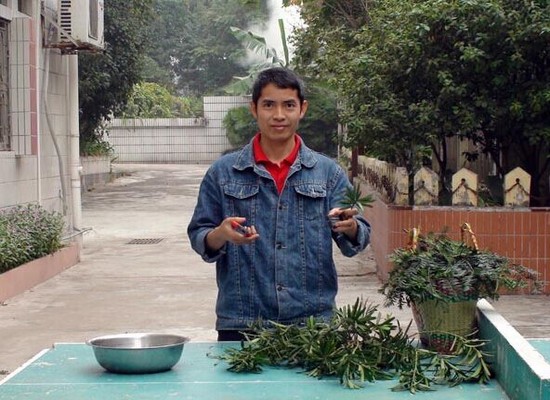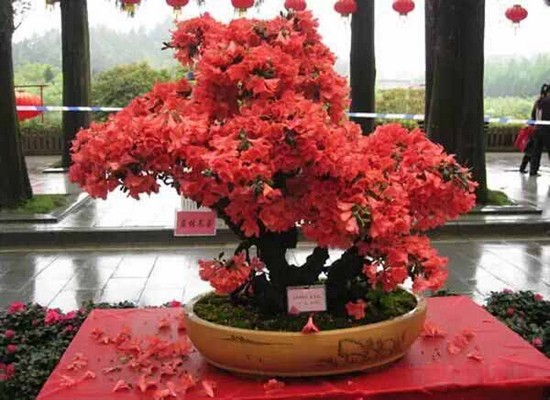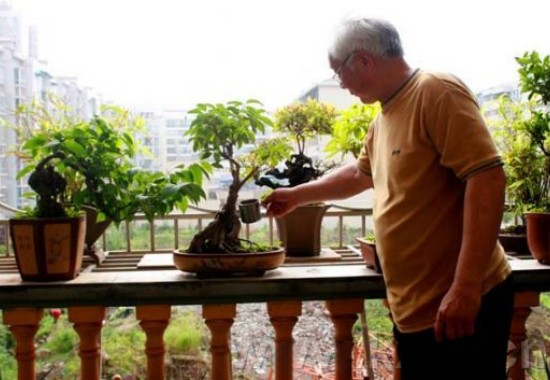The method of raising seedlings of bonsai by cutting propagation
Cuttage propagation has the advantages of simple and rapid operation, high efficiency and low cost. Normal cutting seedlings have good root extension, high survival rate and fast growth, so they are deeply welcomed by farmers.

I. Mechanical treatment
The main results are as follows: 1. Peeling the fruit trees with more developed branch cork tissue, and the varieties which are more difficult to root, peel off the epidermis cork layer before planting to strengthen the water absorption capacity of cuttings, which can promote rooting.
2. A 2-3 cm long wound is carved with a knife to the phloem, which can form neat adventitious roots in the longitudinal wound groove.
3. Ring peeling on the mother plant to be used as the base of cuttings, generally 15 days before cutting, ring peeling a circle of cortex, 3-5 mm wide, which is helpful to promote adventitious roots. Hanging on branches with materials such as iron wire can also have the same effect.
Second, heating treatment
In early spring, it is often difficult for cuttings to take root because of insufficient soil temperature. The temperature of the rooting place at the lower end of the cuttings is artificially increased, while the environmental temperature of the upper buds is reduced by spraying water and ventilation. The lower end of the use of plastic film, or the use of straw, organic fertilizer to generate heat to increase temperature. Before insertion, lay a layer of sand or sawdust on the bed surface with a thickness of about 3-5 cm, bury the cuttings upright in bundles or rows, fill the gap with wet sawdust, expose the terminal bud more than 3 cm, and keep the base of the cuttings 20-28 ℃.
III. Hormone treatment
Some cuttings that are easy to flow glue should be put into water immediately after harvest and then treated with hormones. The commonly used hormones are 2mem4murD, naphthylacetic acid, indolebutyric acid | indole acetic acid, ABT rooting powder and so on.
The main results are as follows: 1. The treatment method of impregnation is dilute solution impregnation. Hardwood is generally used for 5-10 ppm, and cuttings are dipped for 12-24 hours, and shoots are generally used for 5-25 ppm for 12-24 hours. In addition, when auxin was mixed into 5000-10000 ppm and dipped for 1-2 hours, the rooting effect was also very good.
2. Powder dipping method use talc powder as diluted filler to mix 500-2000 ppm and mix for 2-3 hours. First soak the base of the cuttings with water, and then dip in powder for cutting.
IV. Treatment of other substances
Soaking the base of cuttings with vitamin B1 or vitamin C of 1ppm for 12 hours, and then treated with hormone, even persimmon and Chinese chestnut which are difficult to root have more than 50% rooting rate. 2% of 10% sucrose aqueous solution, whether used alone or mixed with auxin, is generally impregnated for 10-24 hours and has a better rooting effect. The treatment with 0.1%-0.5% potassium permanganate had obvious rooting effect on privet, willow, chrysanthemum, poinsettia and so on.
Time: 2019-06-12 Click:
- Prev

Pruning modeling technology of rhododendron bonsai
Cuckoo bonsai is a work of art, the pursuit of its artistic characteristics, it is necessary to talk about the perfect combination and comprehensive display of family roots, piles, stems and branches. Generally speaking, it is difficult to change the roots and piles of rhododendron bonsai, but it is easy to use the branch method and has plenty of room for expression.
- Next

Fertilization skills of tree stump bonsai
The soil in the pot of tree stump bonsai is limited, so the nutrients are also limited, so we should pay attention to the supplement of fertilizer. Because of its artistic characteristics, tree stump bonsai should not be fertilized too much or too frequently. It is necessary to master the content and types of fertilization and grasp the fertilization season. The three elements of plant growth nutrients are nitrogen, phosphorus and potassium fertilizer.
Related
- Fuxing push coffee new agricultural production and marketing class: lack of small-scale processing plants
- Jujube rice field leisure farm deep ploughing Yilan for five years to create a space for organic food and play
- Nongyu Farm-A trial of organic papaya for brave women with advanced technology
- Four points for attention in the prevention and control of diseases and insect pests of edible fungi
- How to add nutrient solution to Edible Fungi
- Is there any good way to control edible fungus mites?
- Open Inoculation Technology of Edible Fungi
- Is there any clever way to use fertilizer for edible fungus in winter?
- What agents are used to kill the pathogens of edible fungi in the mushroom shed?
- Rapid drying of Edible Fungi

